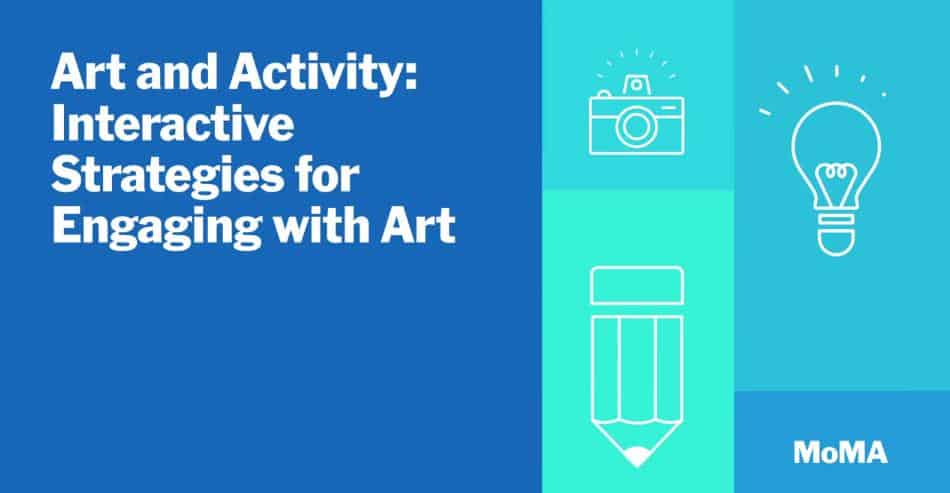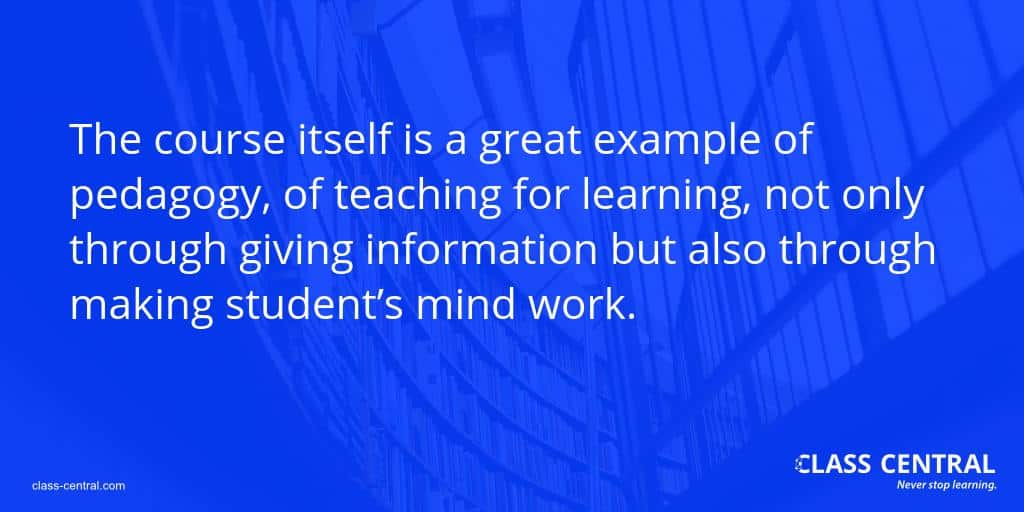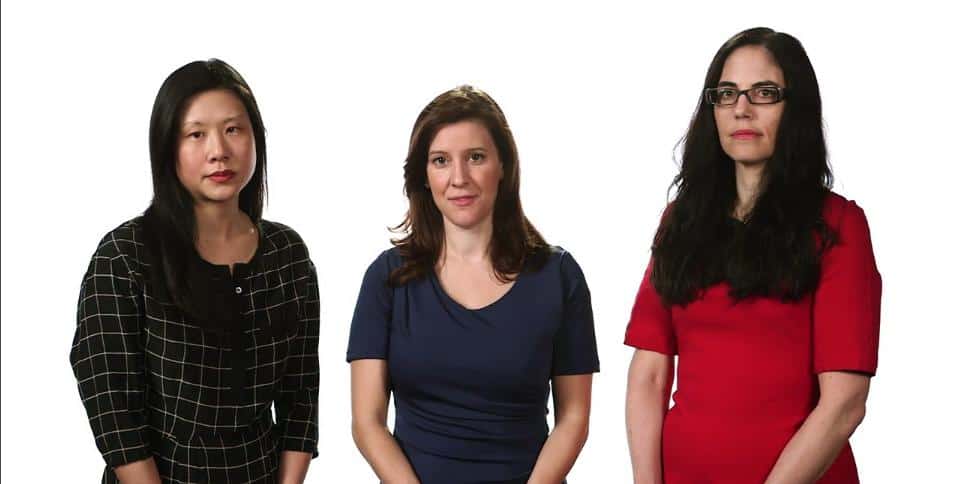In-depth Review: Art and Activity, Interactive Strategies for Engaging with Art
Detailed review by Class Central user Elena Pozdnyakova on this course which seeks to change how we view and teach art.
Review by Elena Pozdnyakova. Elena is a graduate student in Medieval Art History, passionate about Byzantine culture and teaching/learning psychology. On weekends you can find her reading books aloud or strolling through the streets of old Moscow with her husband and a bottle of Austrian wine.
Took the course? Write your own review here. Read all reviews.
Art and Activity is a MOOC offered by MoMA via Coursera. It’s a sequel of Art and Inquiry: Museum Teaching Strategies For Your Classroom Course which contains all of the basic methodology for interactive learning about art. However, I took these two courses in a reverse order and still was happy with them. They also go well individually and mastering the inquiry method is not necessary for being successful in Art and Activity.
Professors develop the idea that the experience of art can be received and expressed not only verbally but through all of the senses
This course is primarily intended for museum teachers, but it will be useful for school teachers, parents, art students and just any person who wants to understand more than just the date and medium of artworks. It’s based on the constructivist approach to learning, which is learning through connection between personal experience and ideas. During the course professors develop the idea that the experience of art can be received and expressed not only verbally but through all of the senses and give very useful examples of museum and class activities.
No prior experience is needed for success, as all of the instructions are clear and concepts pretty intuitive, but in my opinion the course will build up perfectly on some basic teaching and art theory knowledge.
Dare I say, it’s a life-changing course.
The course itself is a great example of pedagogy, of teaching for learning, not only through giving information but also through making student’s mind work. And this work will go day and night, long after the last lecture video has ended. Dare I say, it’s a life-changing course.
I took this class because I recently graduated as art historian and started teaching (in order to get myself a deeper understanding of art perception for my research). I found out that classic pedagogy that I studied in university doesn’t give me and my students enough tools to connect to artworks. I was asked to develop rigorous lesson plans that contained a sequence of asking predefined questions and getting predefined answers prior to giving some information. Sounds terrible? Sometimes it is. I wanted to bring something new, fresh and, say, humane into teaching process at my work and I needed to be prepared. So, as the first step I took MoMA courses.
GENERAL INFORMATION
The course contains four themes divided between four weeks of study. After a short introduction follow Activities for Analyzing and Reflection, Activities for Creating, Imagining & Connecting and Assessment Strategies sections. In the introduction we learn about MoMA museum teaching aims and approaches. Two middle sections contain methodology explained by professors, Take Action videos that are hands-on examples of specific activities (i.e. practice), wide theoretical background given by readings and a quiz. The Assessment part contains some thoughts on assessing student work and a final peer-reviewed assignment designed to apply all of the new knowledge in a short activity plan.
This MOOC is taught by three charming women – Jessica Baldenhofer (Associate Educator, School Visits & Partnerships at MoMA), Lisa Mazzola (Assistant Director, School and Teacher Programs Department of Education) and Stephanie Pau (Associate Educator, Interpretation & Research Department of Education). All three of them have great experience in Museum Education and develop teacher training programs and both digital and analog learning resources.
COURSE EXPERIENCE
The course is self-paced. Actually it’s possible to complete the course in one weekend (plus some time for developing the idea for the final assignment), though the syllabus suggested studying for four weeks and up to three to four hours a week. The course contains of approximately one and a half hours of lecture videos (that represent practice through different activity examples) and a great amount of required and supplementary theoretical reading. Honestly, reading all of those articles and book chapters on perception theory, pedagogy etc was the hardest part of the course even for me, an art historian and practicing teacher. It was some really good and useful reading, believe me.
Being short, sweet and (it’s always appealing) about art, this course is also deep, richly developed and very demanding.
Being short, sweet and (it’s always appealing) about art, this course is also deep, richly developed and very demanding. There are four assignments: three quizzes based on lectures AND required readings and a final peer reviewed assignment, which is basically a short lesson plan. The quizzes are easy once you master all of the materials but creating a good lesson plan is somehow a tough task. I had to not only review some lectures but also to flip through my art history notes looking for ideas. I wanted to create something as deep and amazing as some of my fellow students’ works – several simple activities and one piece of artwork merged in their plans in promising, life-changing experiences for students. I too wanted my teaching plan to be some kind of art itself.
And here was the revelation.
When I took the Art and Activity course on Coursera, my world changed.
When we were kids, we all expressed our perception of art in some ways, but we quickly learned to stay still and stare (or to walk hurriedly through museum halls, because we had three hours to see the Louvre and then thirty minutes for hot chocolate with mom). I remember myself doing a dance that followed the composition and brushstroke dynamics. And I danced while drawing my own pictures. Then I was taught that art means good manners and when I became teacher myself I found it somehow stupid to tell my students that Einfühlung, or aesthetic empathy, can (and should!) be expressed in every possible way.
When I took the Art and Activity course on Coursera, my world changed. Not only I became more confident about my own impressions – and that improved my own art history research. Not only I begun teaching in more activity-based way – and my students started to really explore art and enjoy this new knowledge. The most important thing was that I understood (constructively, from my own cognitive work and bodily experience) that art itself promotes art creation – what means studying and teaching art is also art.
Class Central is looking for reviewers and regular contributors. If you’ve ever finished a MOOC and want to write a critique to help future students considering taking that course, we want to hear from you. Drop us a mail.









[email protected]
I proud for following this topic which connected with Coursera.